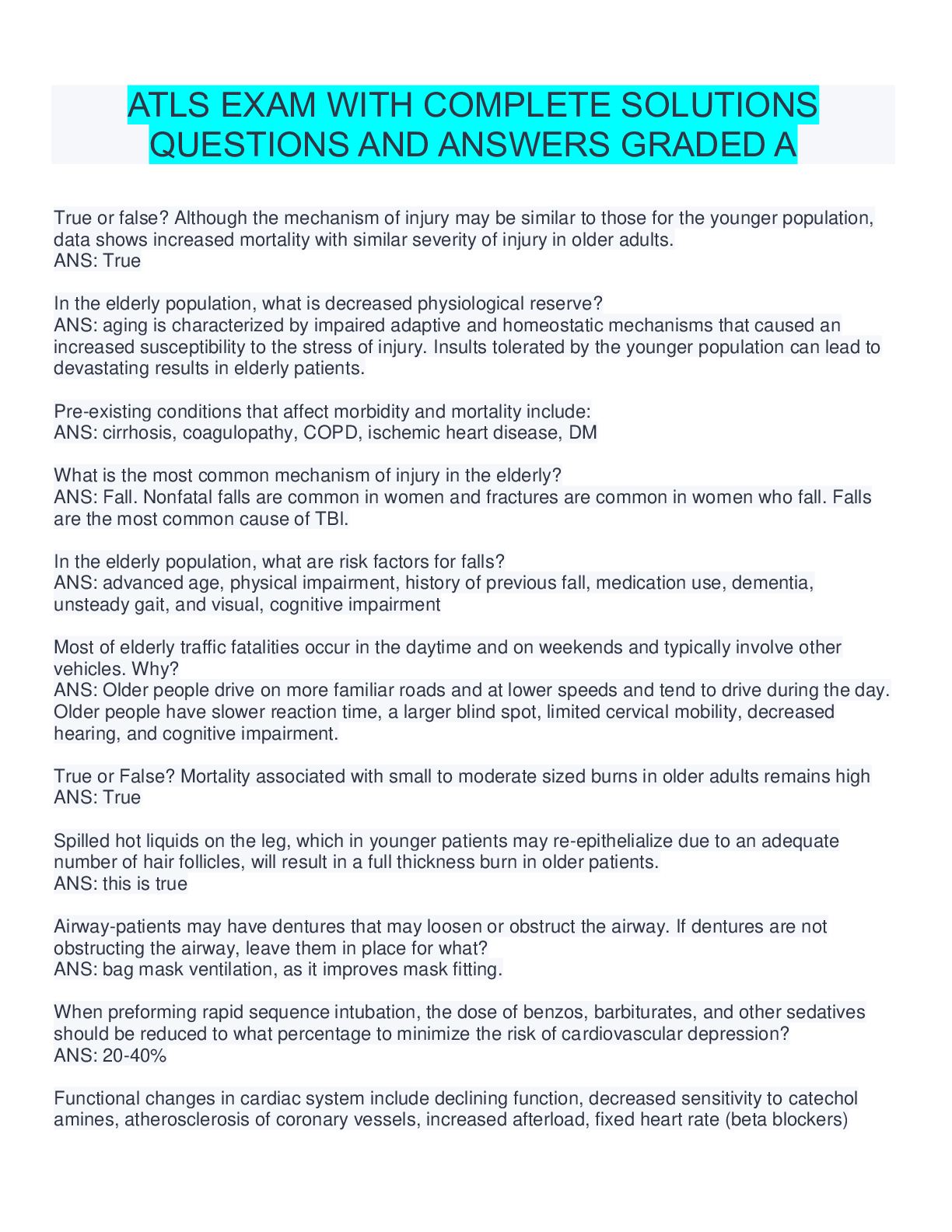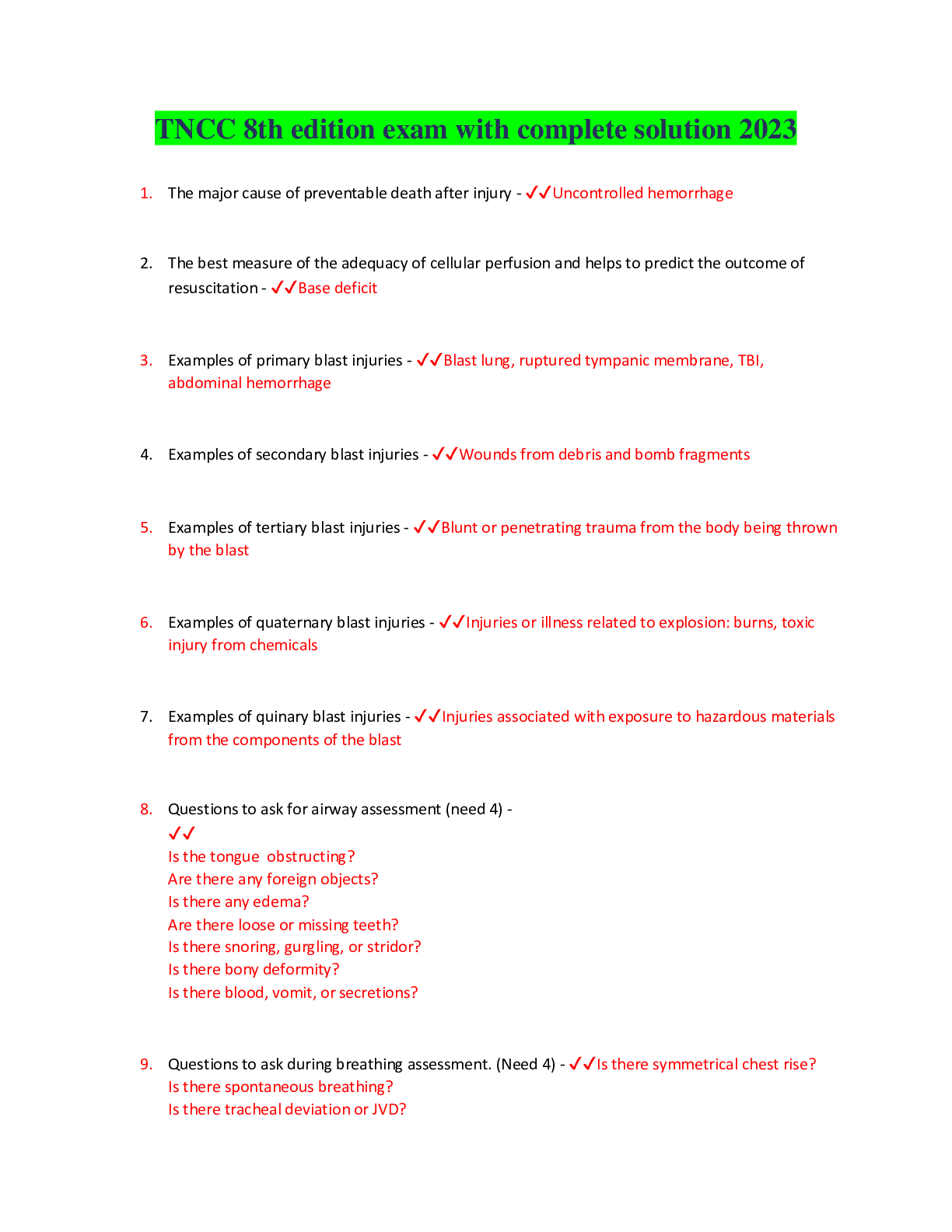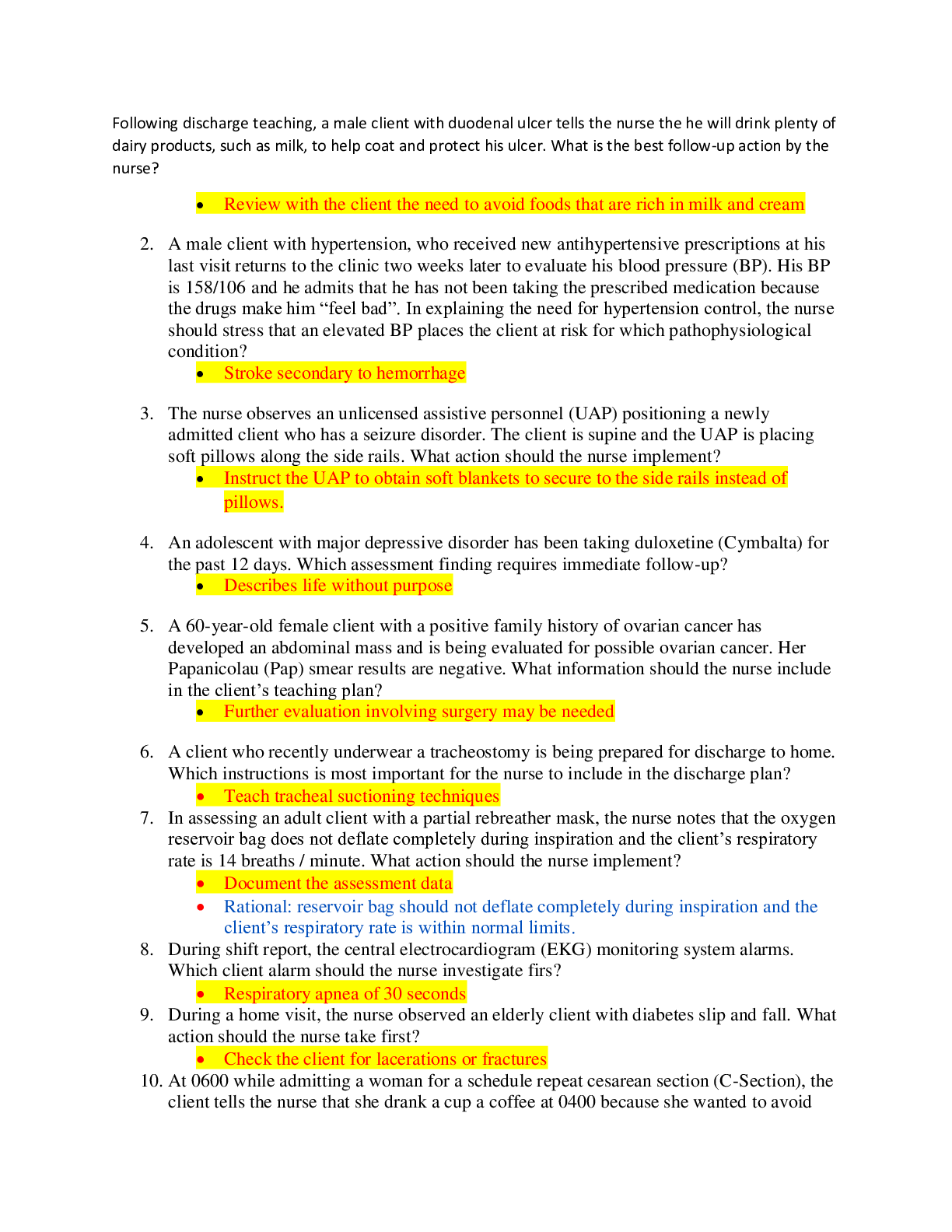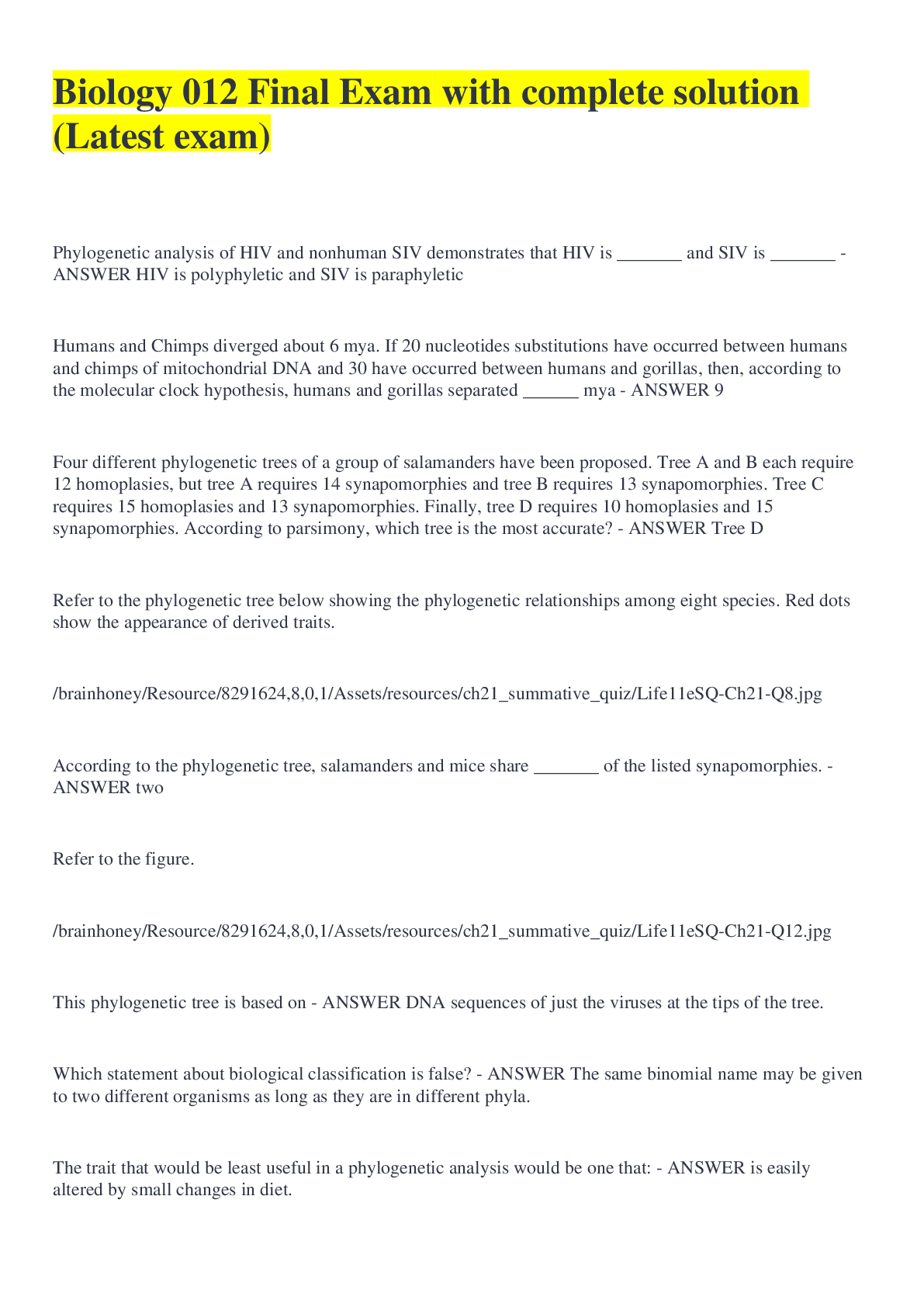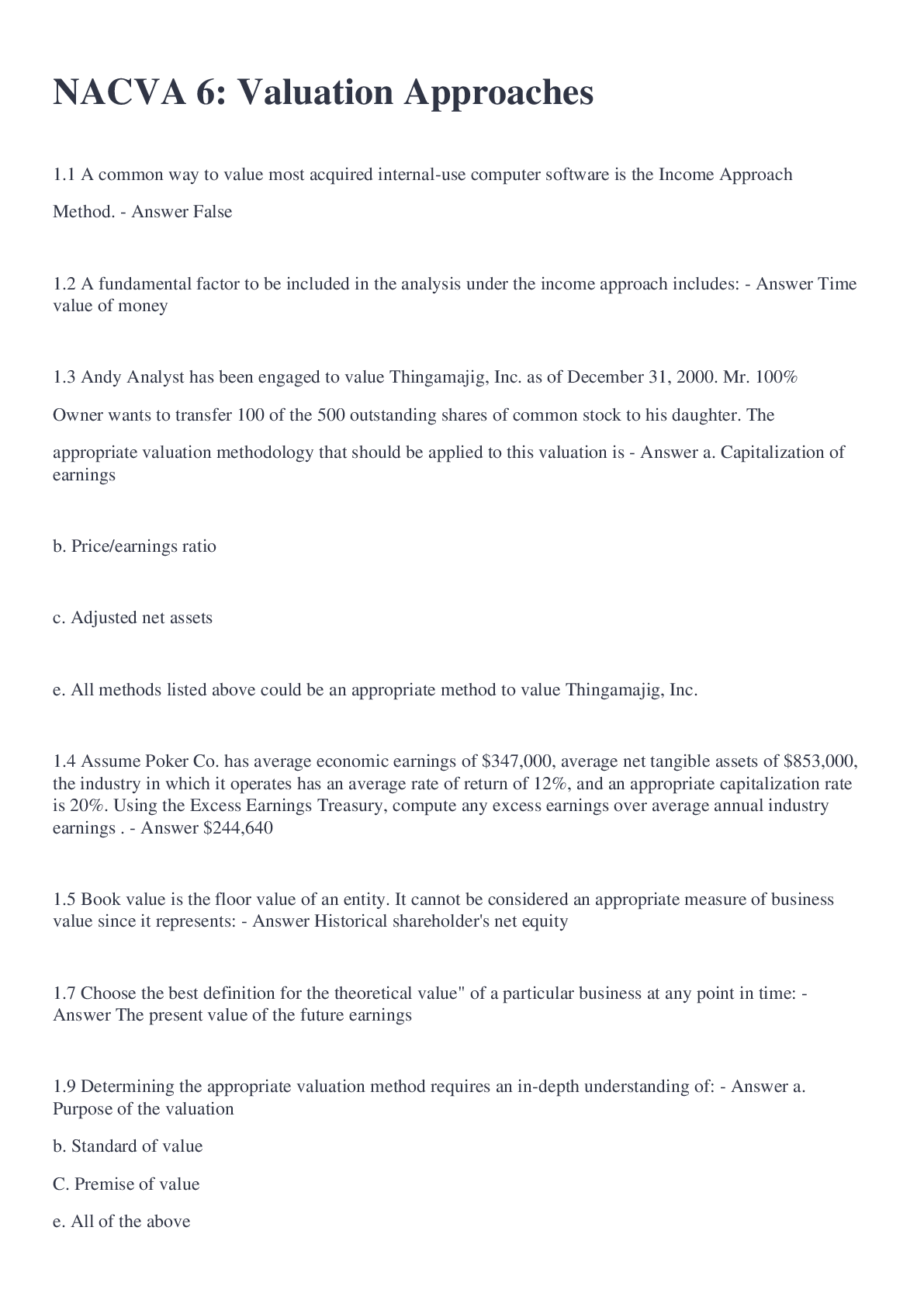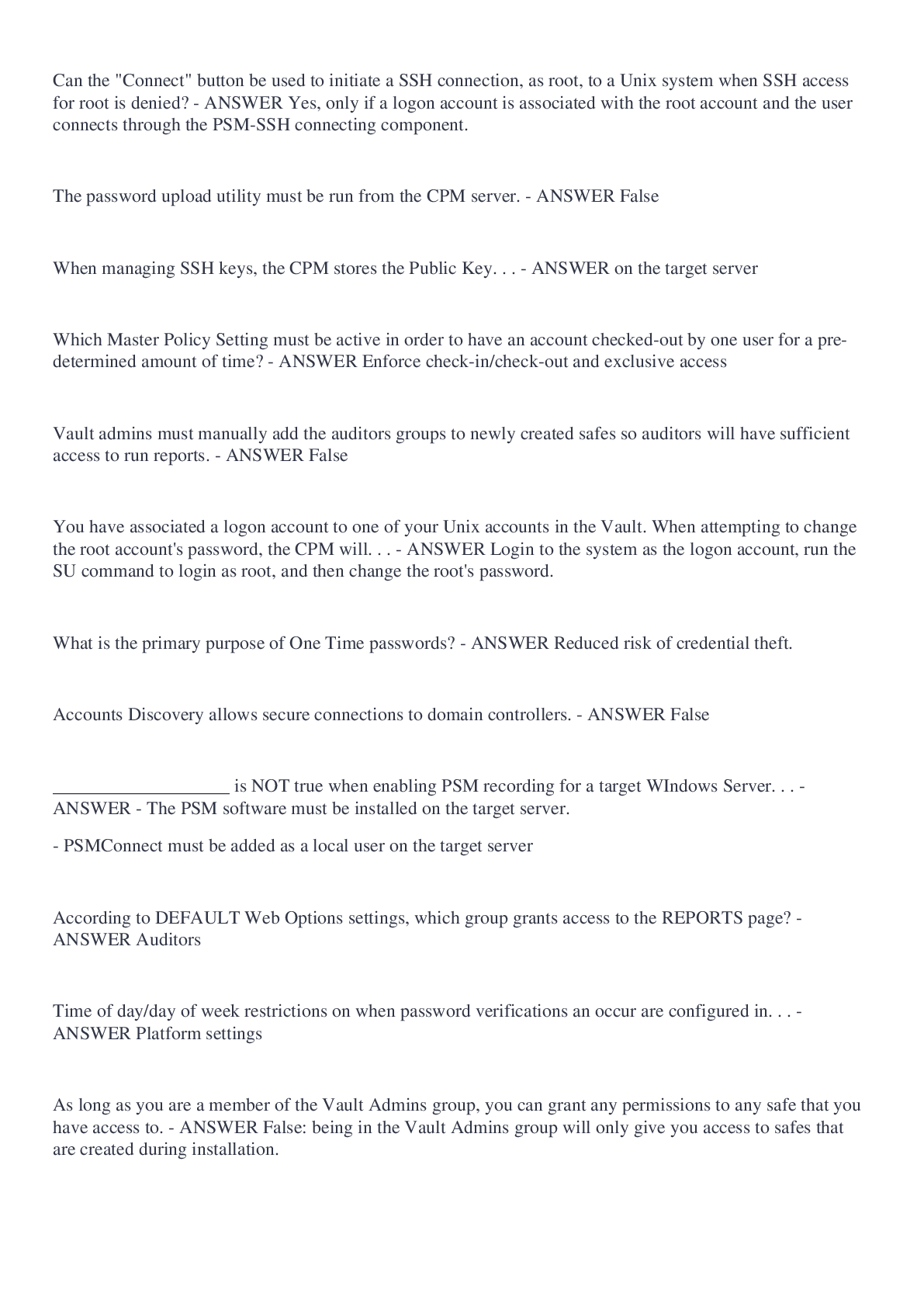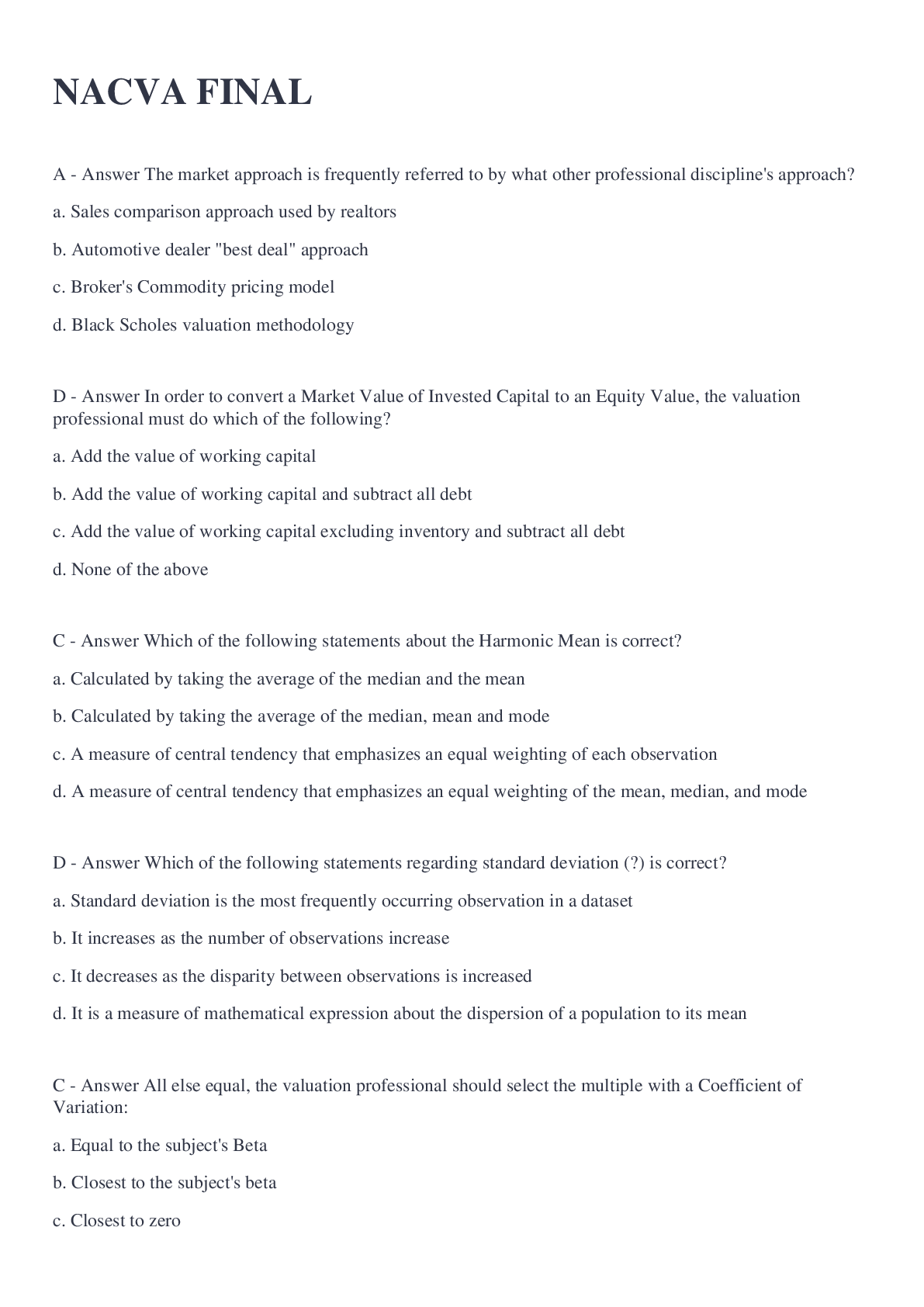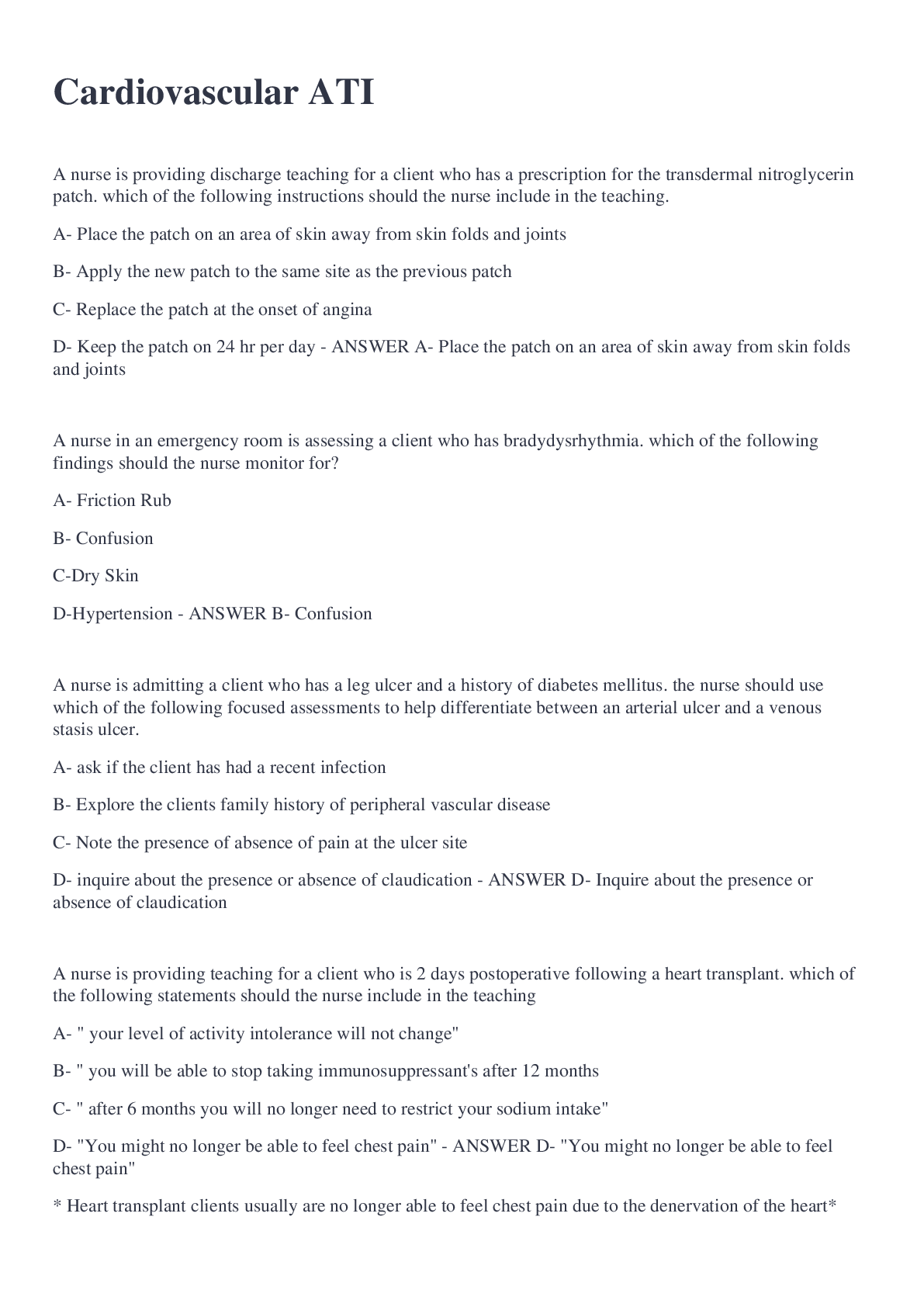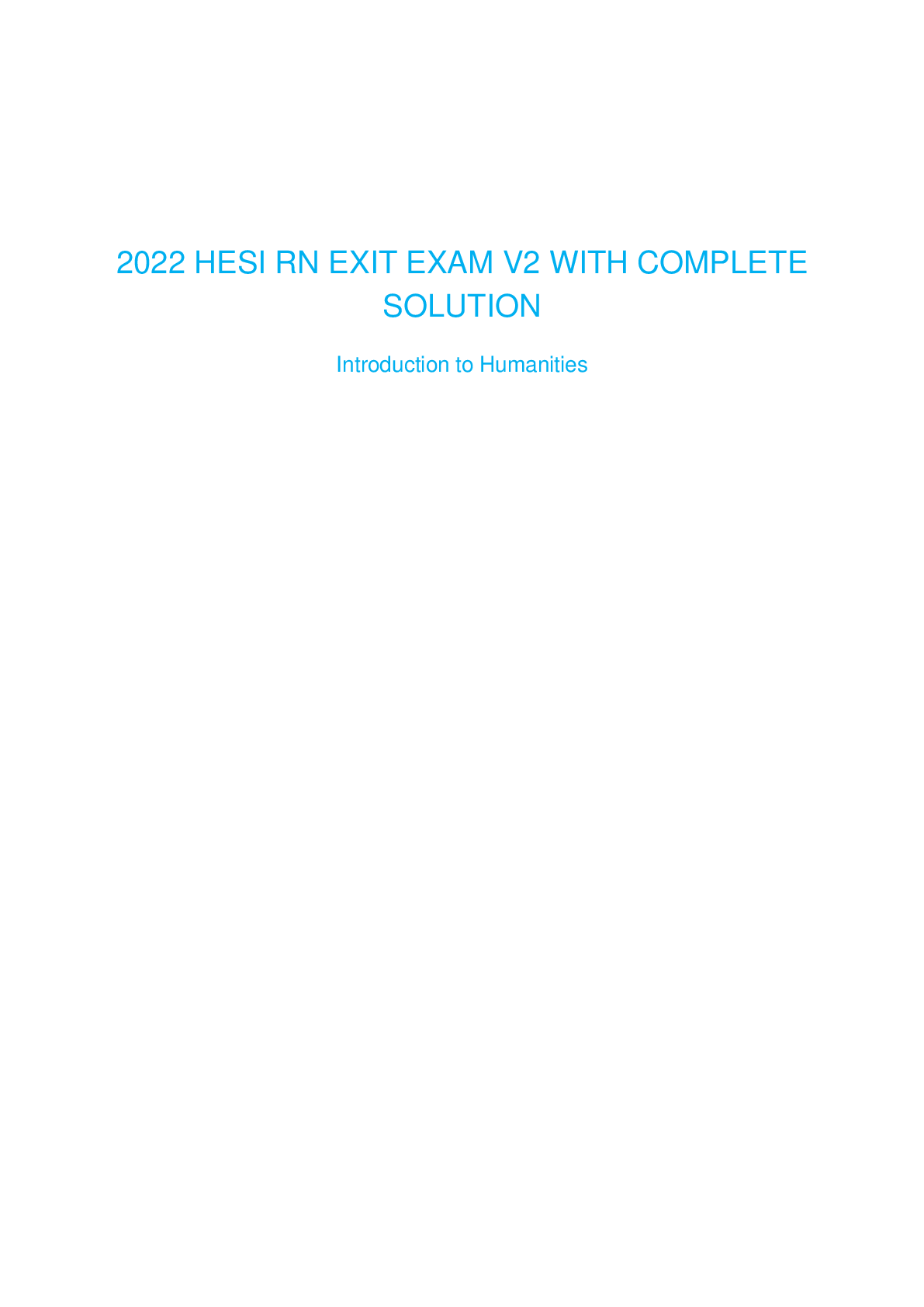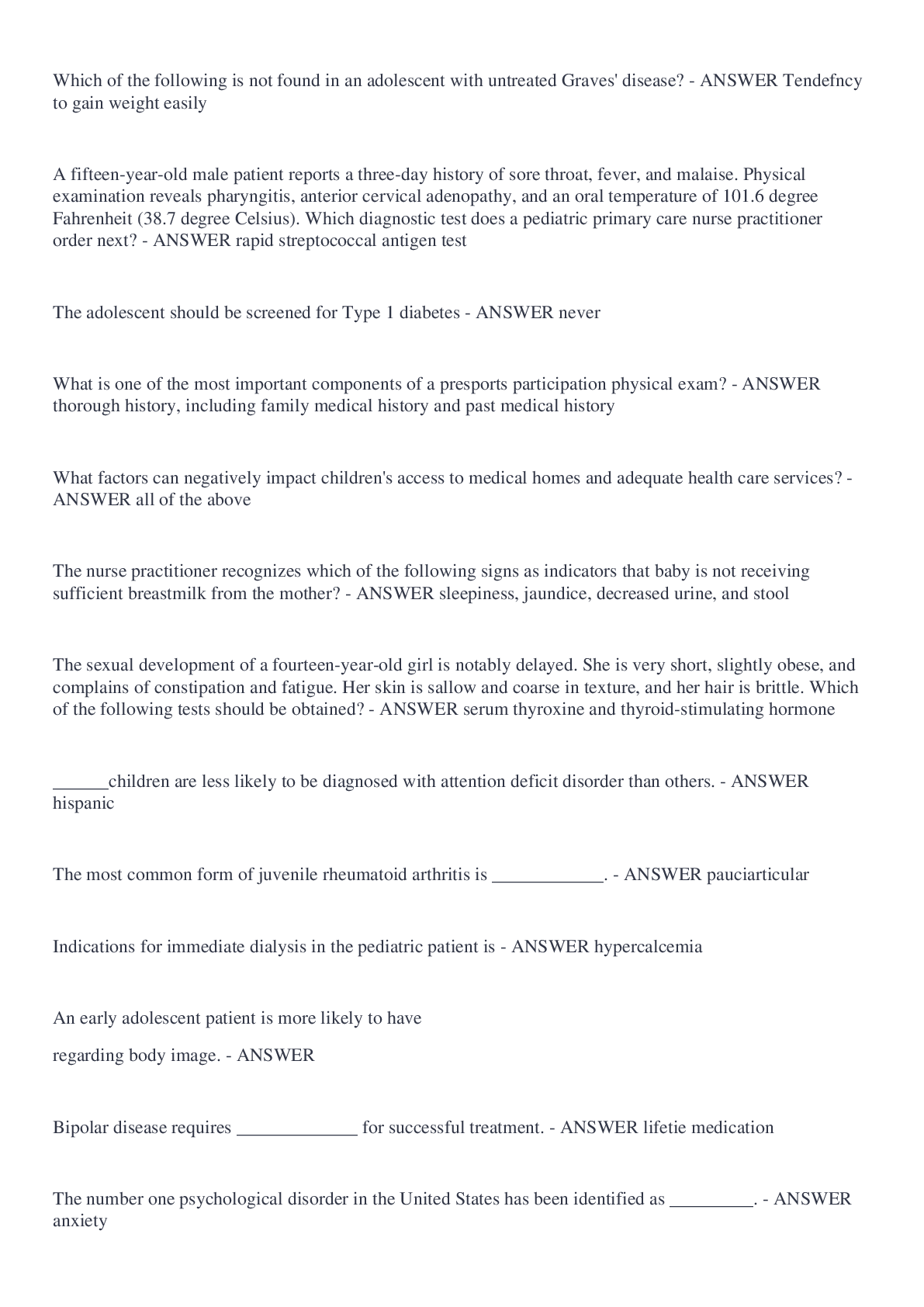NSG 6420 Week 10 Final Exam with Complete Solutions (Graded A+)
Document Content and Description Below
In AR disorders, carriers have: Two mutated genes; two from one parent that cause disease A mutation on a sex chromosome that causes a disease A single gene mutation that causes the ... disease One copy of a gene mutation but not the disease 2. A 76-year-old patient with a 200-pack year smoking history presents with complaints of chronic cough, dyspnea, fatigue, hemoptysis, and weight loss over the past 2 months. The physical exam reveals decreased breath sounds and dullness to percussion over the left lower lung field. The chest X-ray demonstrates shift of the mediastinum and trachea to the left. These are classic signs of: Lung cancer Tuberculosis Pneumonia COPD 3. The nurse practitioner is discussing lifestyle changes with a patient diagnosed with gastroesophageal reflux. What are the nonpharmacological management interventions that should be included? It will be helpful to keep the head of your bed elevated on blocks 4. In examining the mouth of an older adult with a history of smoking, the nurse practitioner finds a suspicious oral lesion. The patient has been referred for a biopsy to be sent for pathology. Which is the most common oral precancerous lesion? leukoplakia 5. You have a patient complaining of vertigo and want to know what could be the cause. Knowing there are many causes for vertigo, you question the length of time the sensation lasts. She tells you several hours to days and is accompanied by tinnitus and hearing loss. You suspect which of the following conditions? Ménière’s disease Benign paroxysmal positional vertigo Transient ischemic attack (TIA) MigraineDefinition 6. Age-related changes in the bladder, urethra, and ureters include all of the following in older women except: A. Increased estrogen production’s influence on the bladder and ureter B. Decline in bladder outlet function C. Decline in ureteral resistance pressure D. Laxity of the pelvic muscle 7. Your patient has been using chewing tobacco for 10 years. On physical examination, you observe a white ulceration surrounded by erythematous base on the side of his tongue. The clinician should recognize that very often this is Malignant melanoma Squamous cell carcinoma Aphthous ulceration Behcet’s syndromeDefinition 8. When interpreting laboratory data, you would expect to see the following in a patient with Anemia of Chronic Disease (ACD) Hemoglobin <12 g/dl, MCV decreased, MCH decreased Hemoglobin >12 g/dl, MCV increased, MCH increased Hemoglobin <12 g/dl, MCV normal, MCH normal Hemoglobin >12 g/dl, MCV decreased, MCH increased 9. What test is used to confirm the diagnosis of appendicitis? CBC Flat plate of abdomen Rectal exam CT of abdomen with attention to appendix 10. Functional abilities are best assessed by: observed assessment of function 11. Your patient is a 43-year-old female golfer who complains of arm pain. On physical examination, there is point tenderness on the elbow and pain when the patient is asked to flex the wrist against the clinician’s resistance. These are typical signs of: Carpal tunnel syndrome Osteoarthritis of the wrist Epicondylitis Cervical osteoarthritis 12. An 86-year-old patient who wears a hearing aid complains of poor hearing in the affected ear. In addition to possible hearing aid malfunction, this condition is often due to Acoustic neurom Cerumen impaction Otitis media Ménière’s disease 13. Which lesions are typically located along the distribution of dermatome? Herpes Zoster 14. n differentiating a gastric ulcer from a duodenal ulcer, you know that each type of ulcer can present with distinct signs and symptoms. Which of the following pieces of information from the patient’s history is the least useful for you to determine that the patient has a duodenal ulcer? A. Pain occurs on an empty stomach B. Diffuse epigastric pain C. Rarely associated with non-steroidal use D. Occurs in patients under 40 years of age 15. A pneumatic otoscopic examination is used to assess: A. Inner ear conditions B. Otitis externa C. Cerumen impaction D. Tympanic membrane mobility 16. In autosomal recessive (AR) disorders, individuals need: Only one mutated gene on the sex chromosomes to acquire the disease Only one mutated gene to acquire the disease Two mutated genes to acquire the disease Two mutated genes to become carriers 17. Which of the following disorders can cause urinary incontinence? Cystocele Overactive bladder Uterine prolapse All of the above 18. An older patient reports burning pain after ingestion of many foods and large meals. What assessment would assist the nurse practitioner in making a diagnosis of GERD? A. Identification of a fluid wave B. Positive Murphy’s sign C. Palpable spleen D. Midepigastric pain that is not reproducible with palpation 19. Which of the following medications are commonly associated with the side effect of cough Beta blocker B. Diuretic C. ACE inhibitor D. Calcium antagonist 20. A 55-year-old post-menopausal woman with a history of hypertension complains of jaw pain on heavy exertion. There were no complaints of chest pain. Her ECG indicates normal sinus rhythm without ST segment abnormalities. Your plan may include Echocardiogram B. Exercise stress test C. Cardiac catheterization D. Myocardial perfusion imaging 21. Your 24-year-old female patient complains of dysuria as well as frequency and urgency of urination that develops the day after she uses her diaphragm. Urine culture reveals a bacterial count of 100 CFU/mL. These signs and symptoms indicate . Upper urinary tract infection B. Lower urinary tract infection C. Normal bacteriuria D. Urethritis 22. Epistaxis can be a symptom of: 23. A careful history of a female client with a chief complaint of intermittent diarrhea reveals that she also experiences bouts of constipation. She has no known allergies and experienced no unintentional weight loss. What is the most likely condition Inflammatory bowel disease Irritable bowel syndrome Giardiasis Lactose intolerance 24. When assessing an elderly client who reports a tremor, which assessment findings would be most reliable in identifying Parkinson’s disease? Any presence of tremor Symptoms of slowed movement, unstable angina, and tremor Resting tremor, slow unsteady gait, and cogwheel resistance Cogwheel rigidity, bradykinesia, and amnesia 25. Which of the following best describes the pain associated with osteoarthritis? A. Constant, burning, and throbbing with an acute onset? B. Dull and primarily affected by exposure to cold and barometric pressure C. Begins upon arising and after prolonged weight bearing and/or use of the joint D. Begins in the morning but decreases with activity 26. During physical examination of a patient, you note resonance on percussion in the upper lung fields. This is consistent with: A. COPD B. Pneumothorax C. A normal finding D. Pleural effusion 27. Jeff, 48 years old, presents to the clinic complaining of fleeting chest pain, fatigue, palpitations, lightheadedness, and shortness of breath. The pain comes and goes and is not associated with activity or exertion. Food does not exacerbate or relieve the pain. The pain is usually located under the left nipple. Jeff is concerned because his [Show More]
Last updated: 1 year ago
Preview 1 out of 16 pages
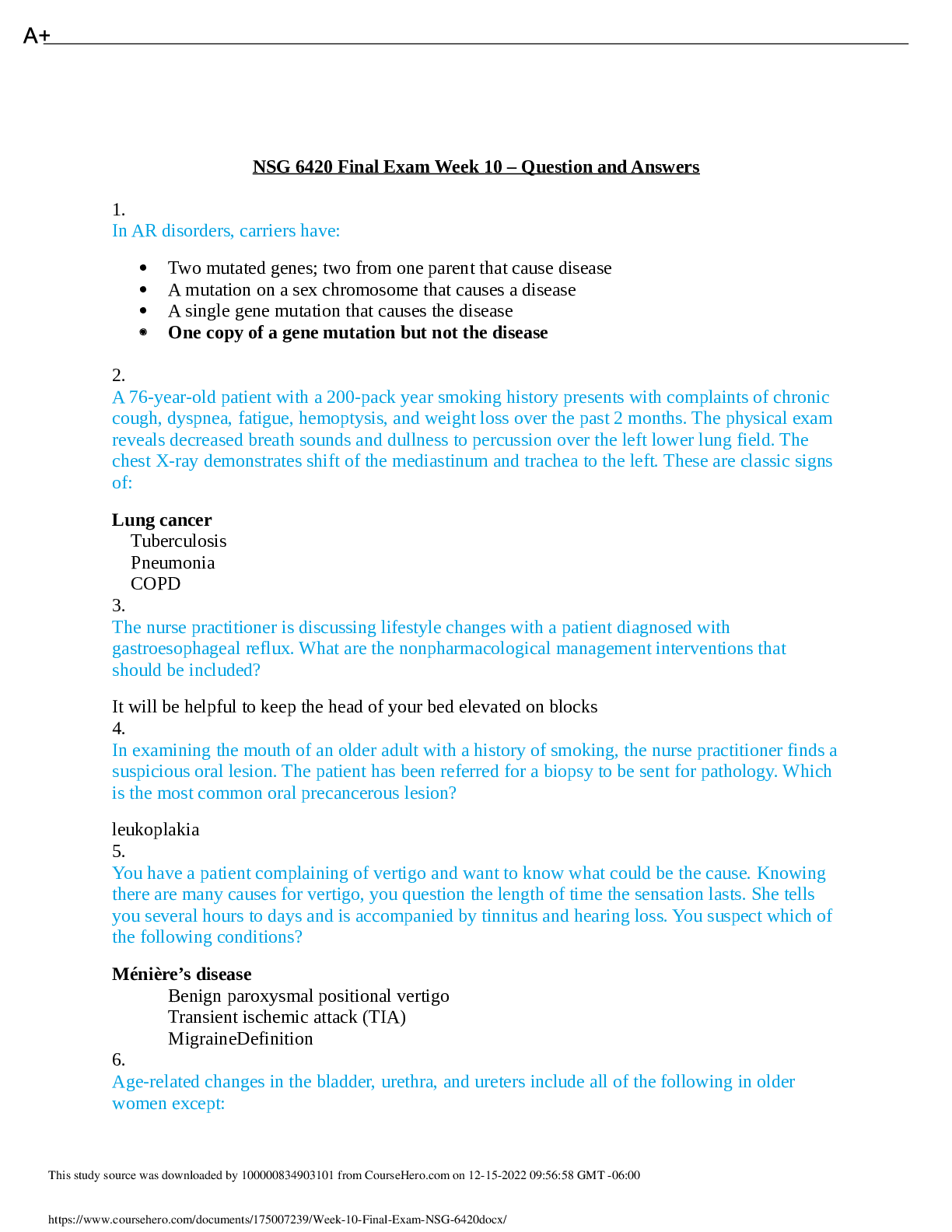
Reviews( 0 )
Document information
Connected school, study & course
About the document
Uploaded On
Apr 13, 2022
Number of pages
16
Written in
Additional information
This document has been written for:
Uploaded
Apr 13, 2022
Downloads
0
Views
82

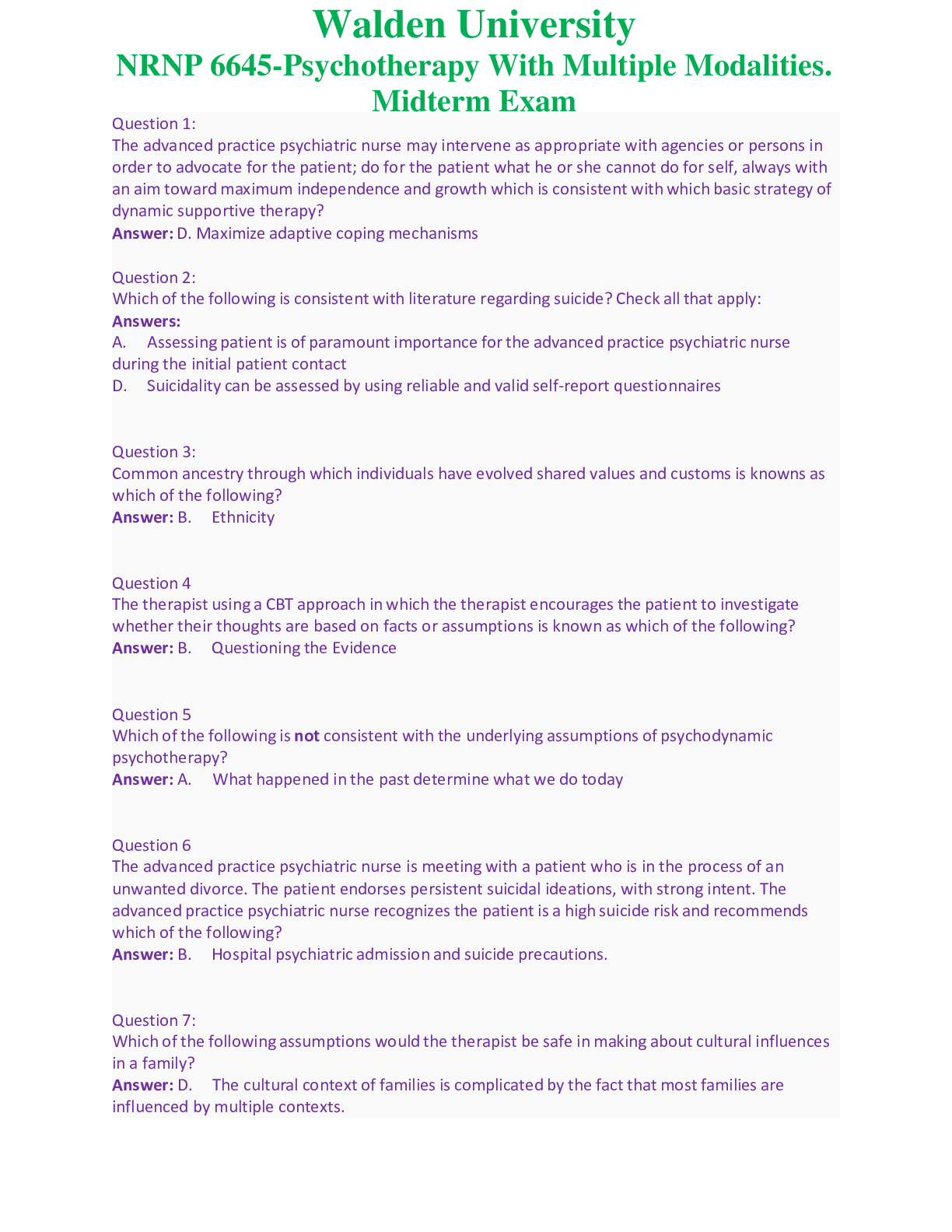

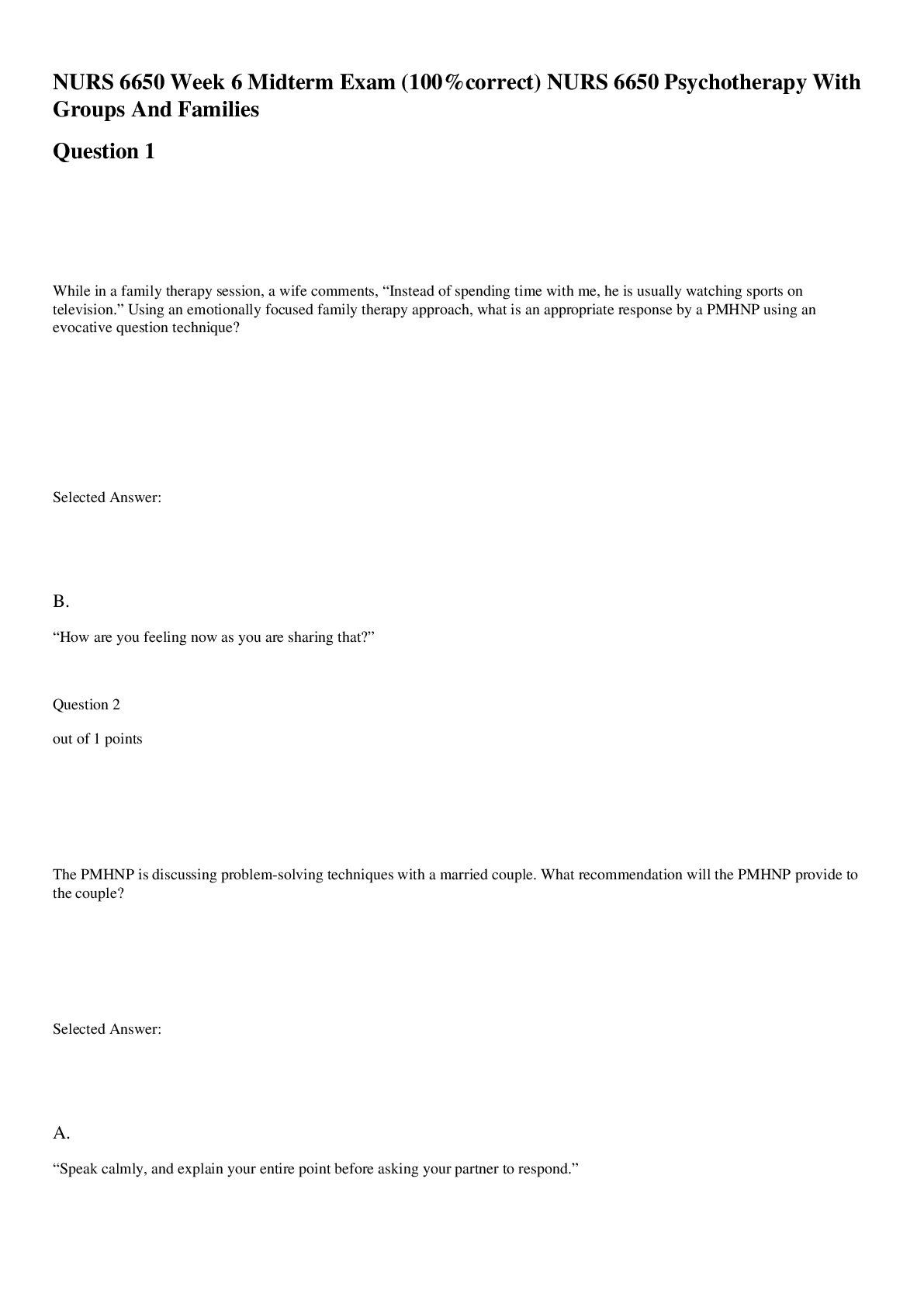
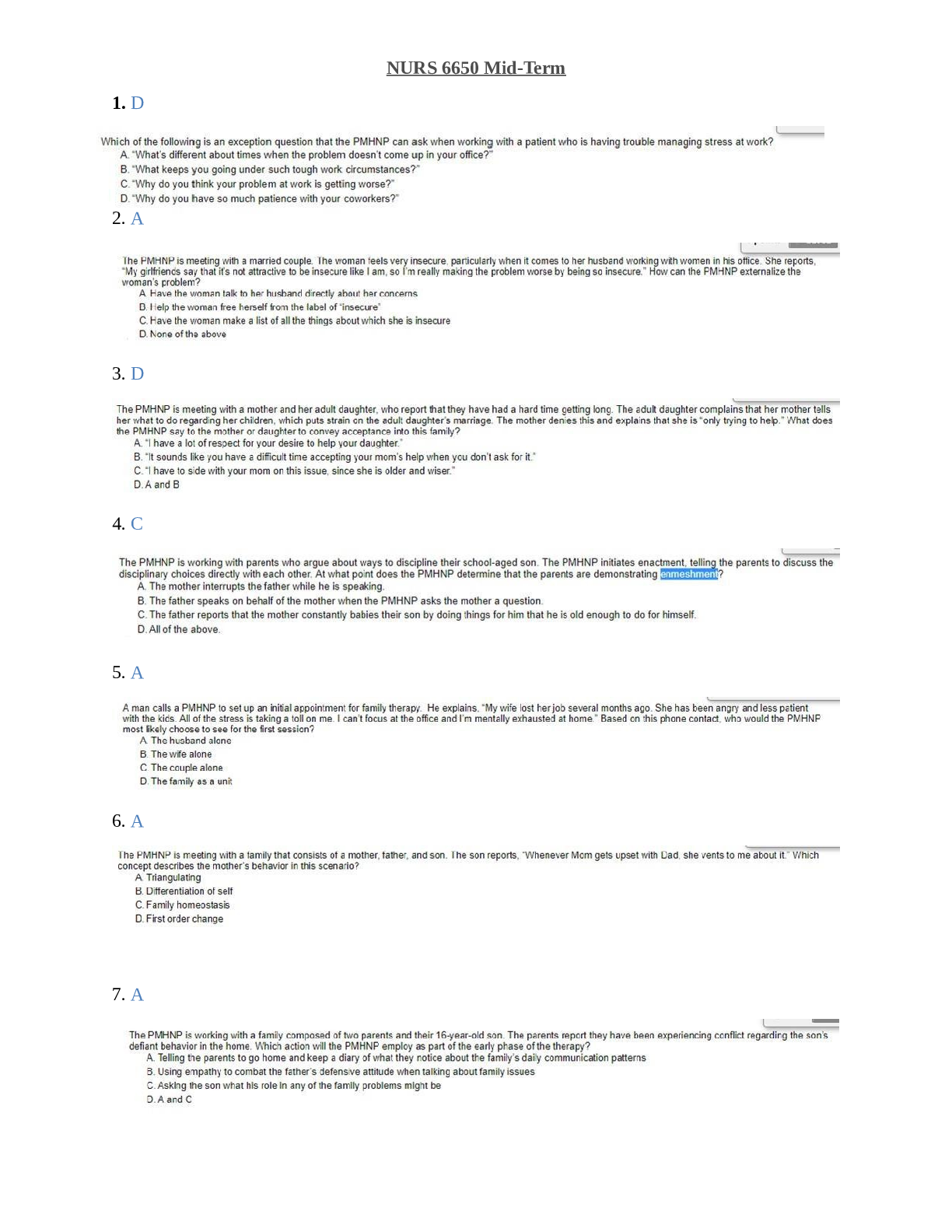
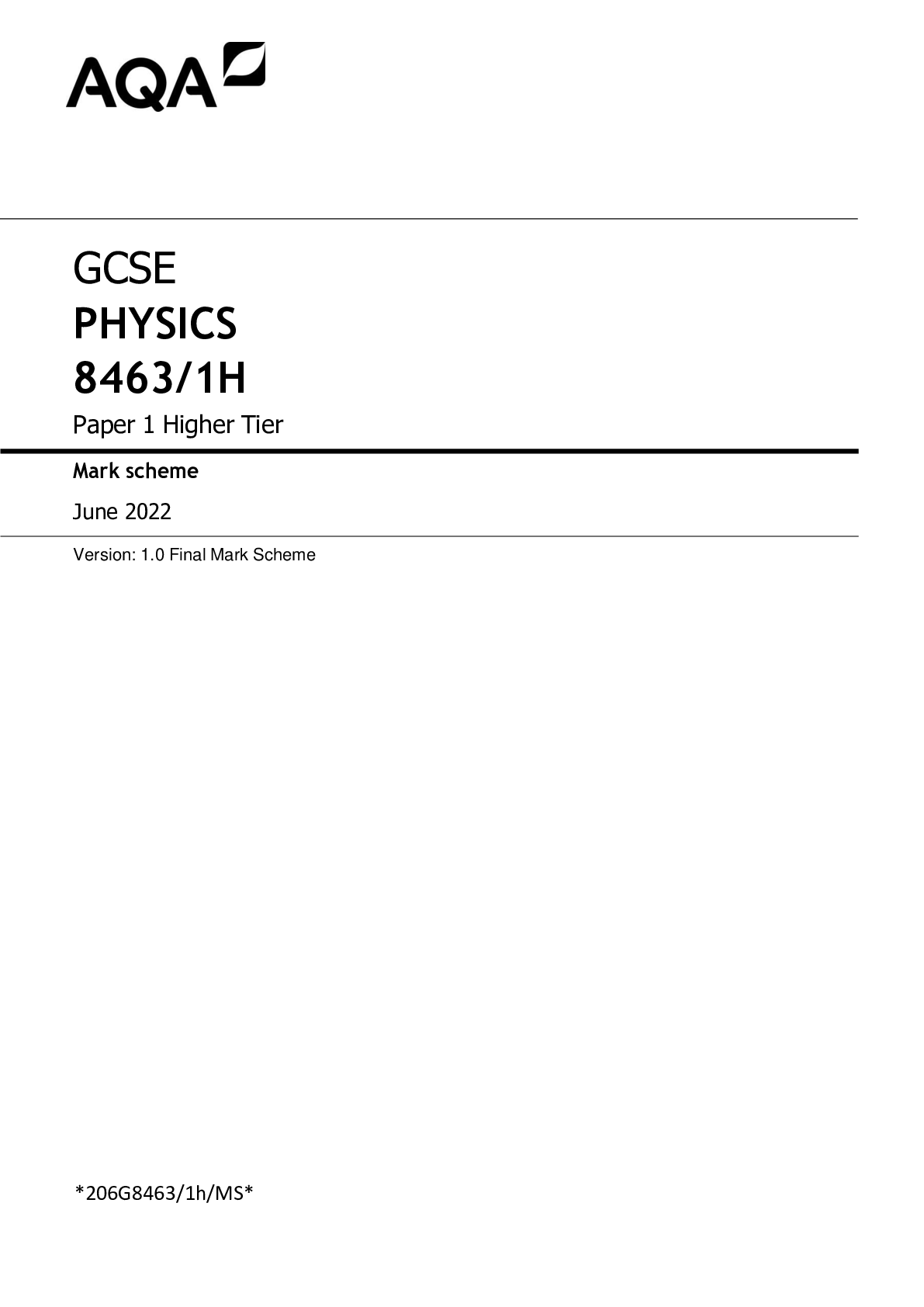

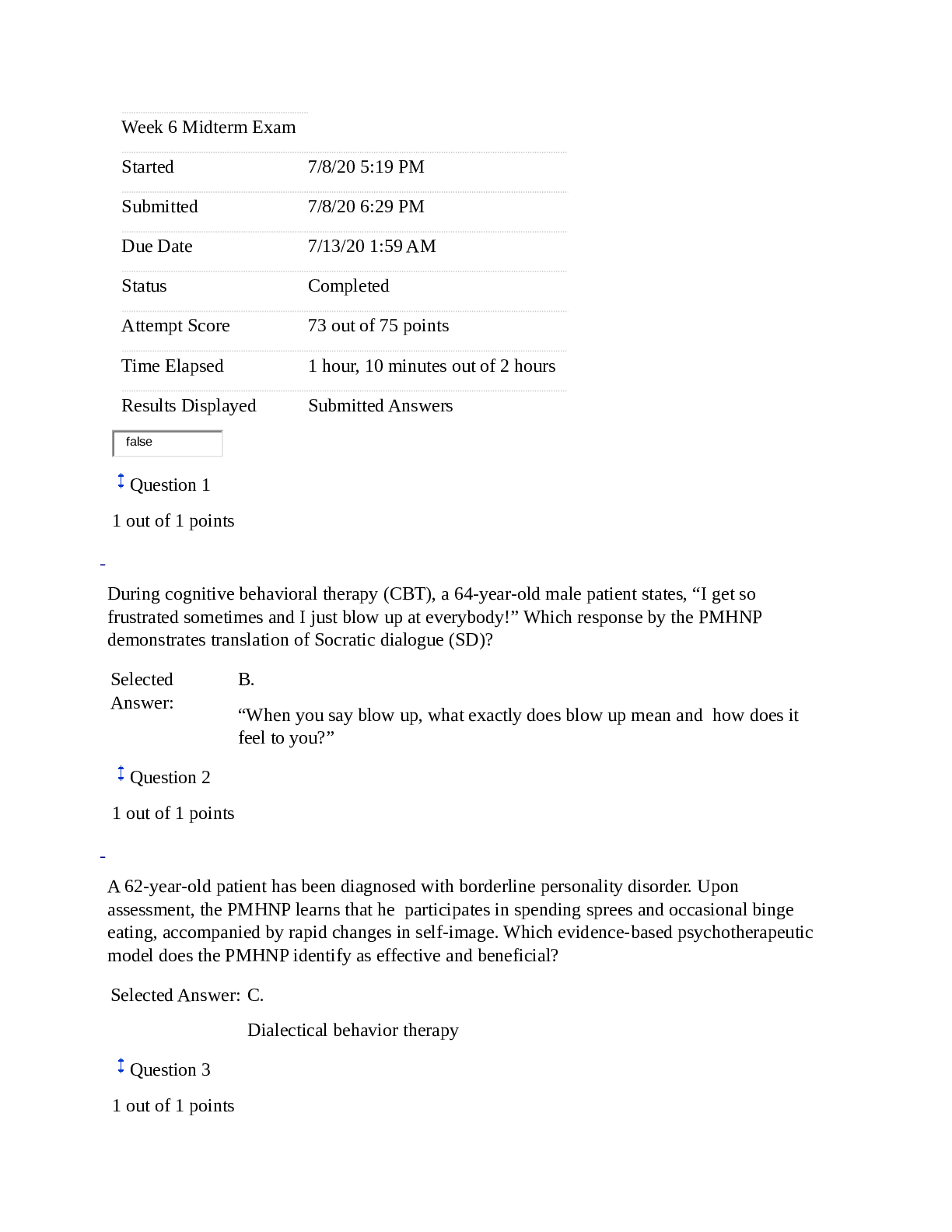
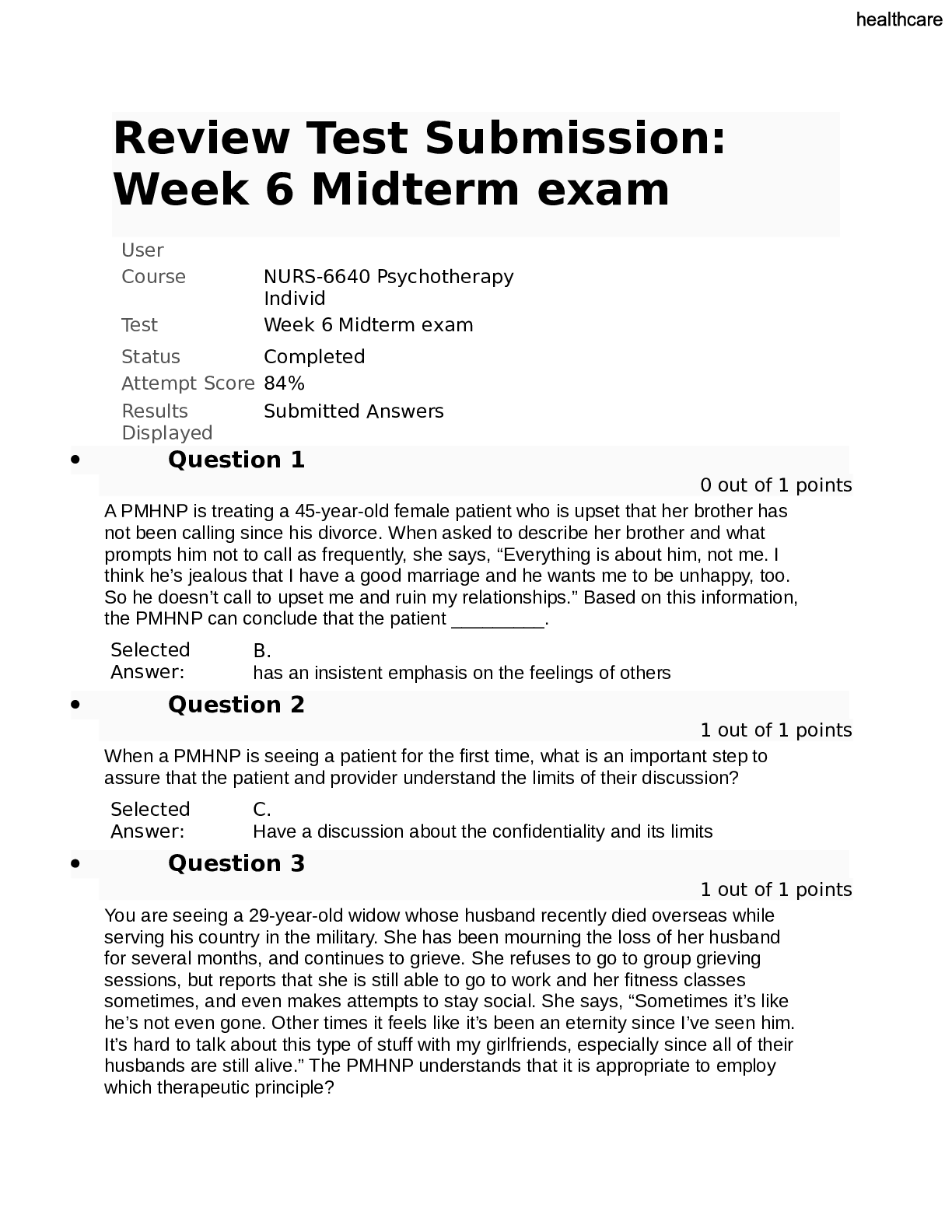
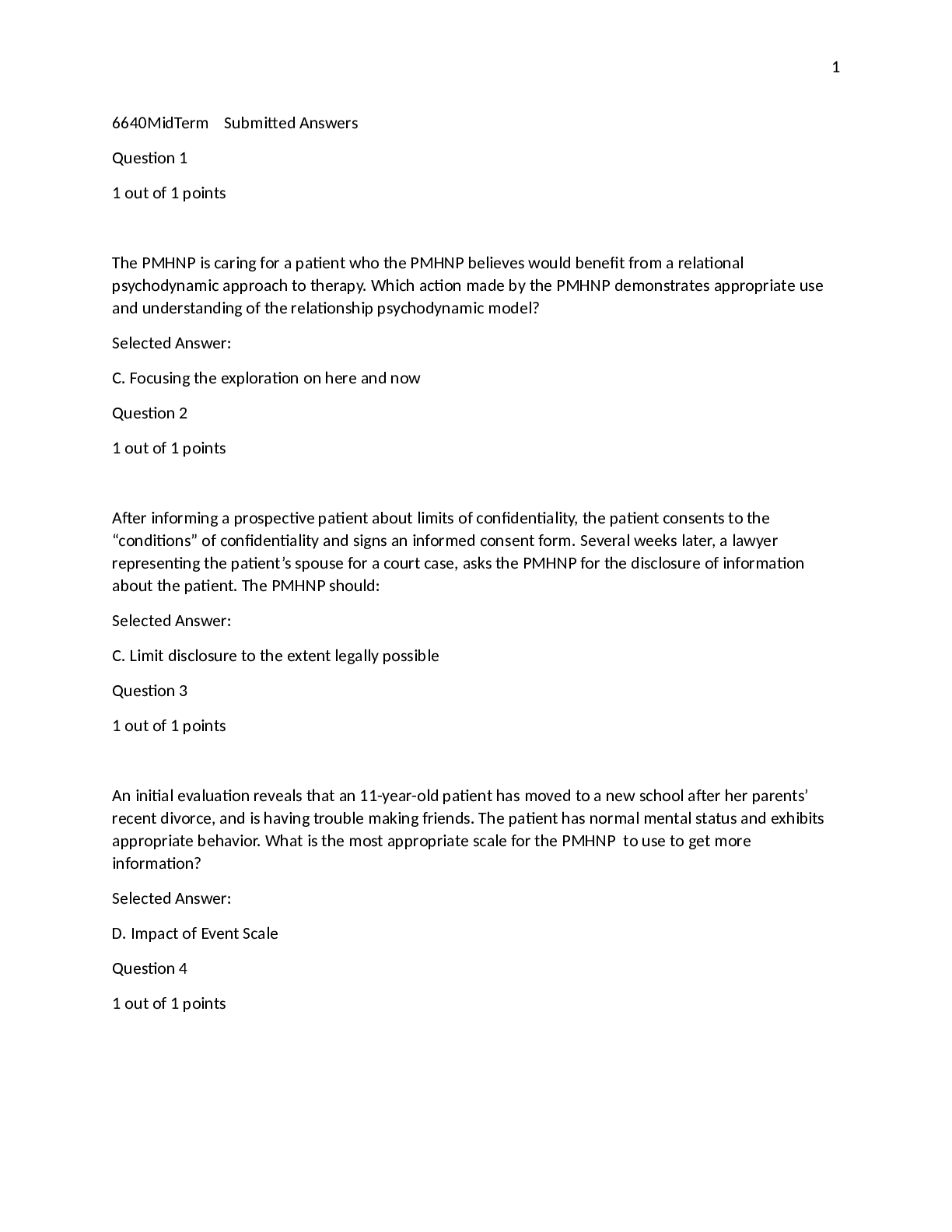

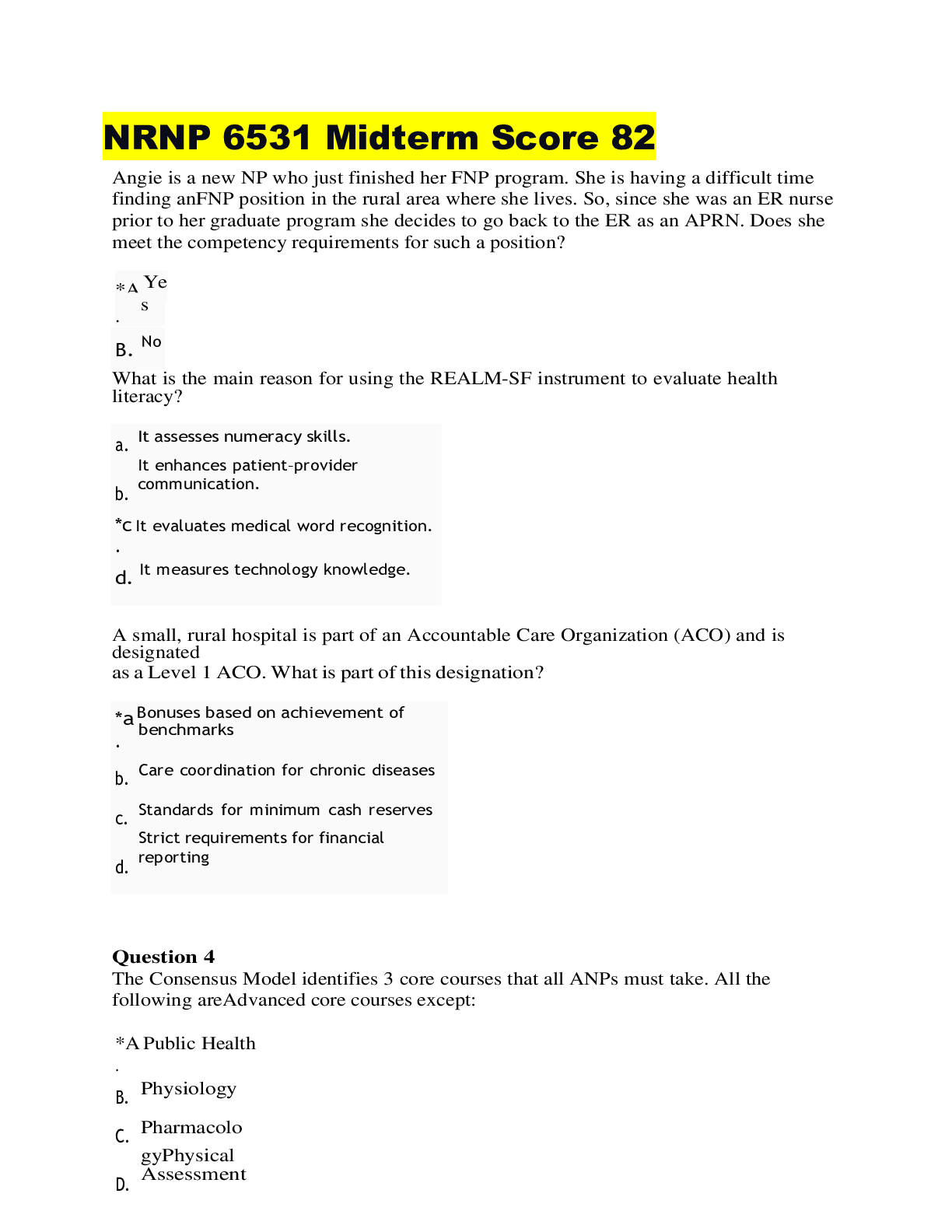
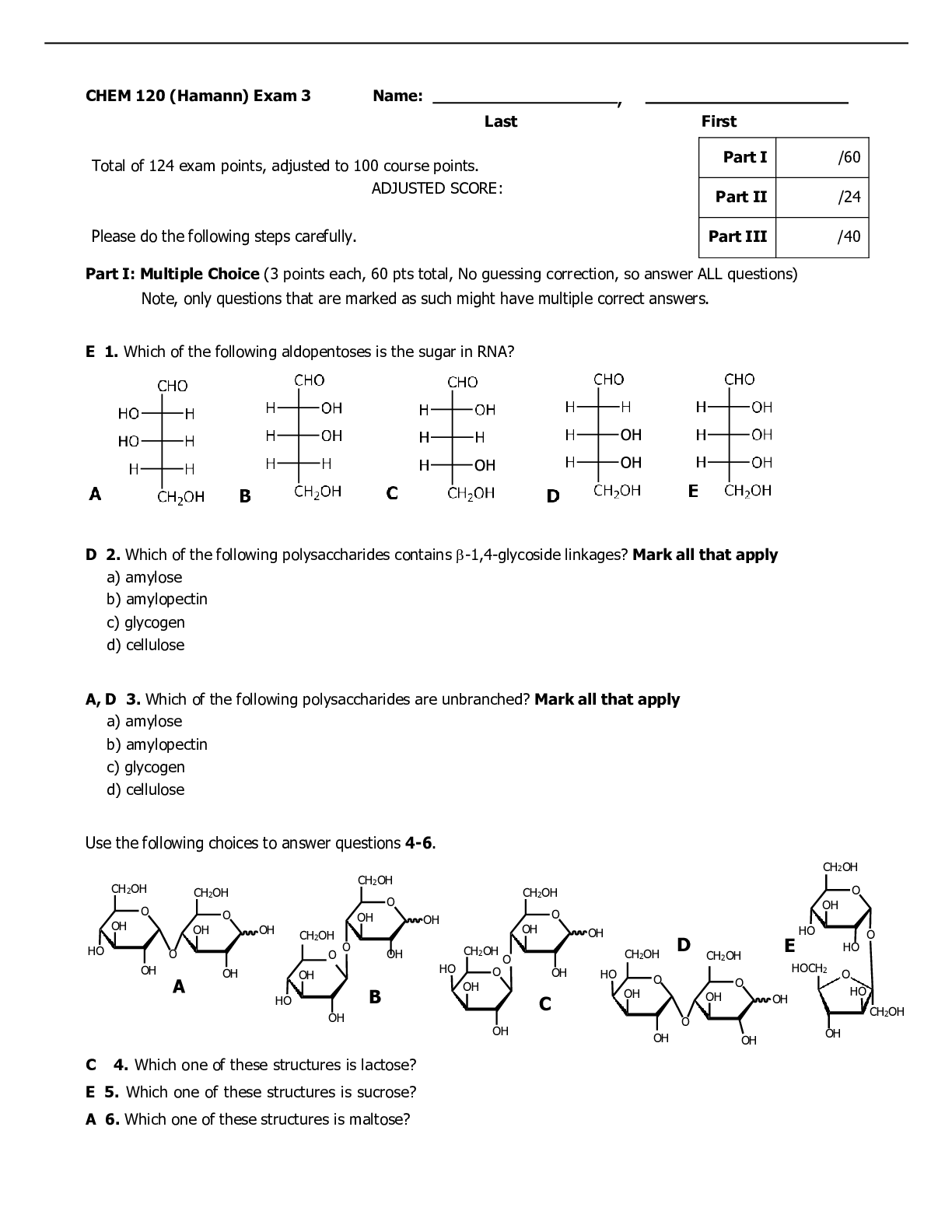
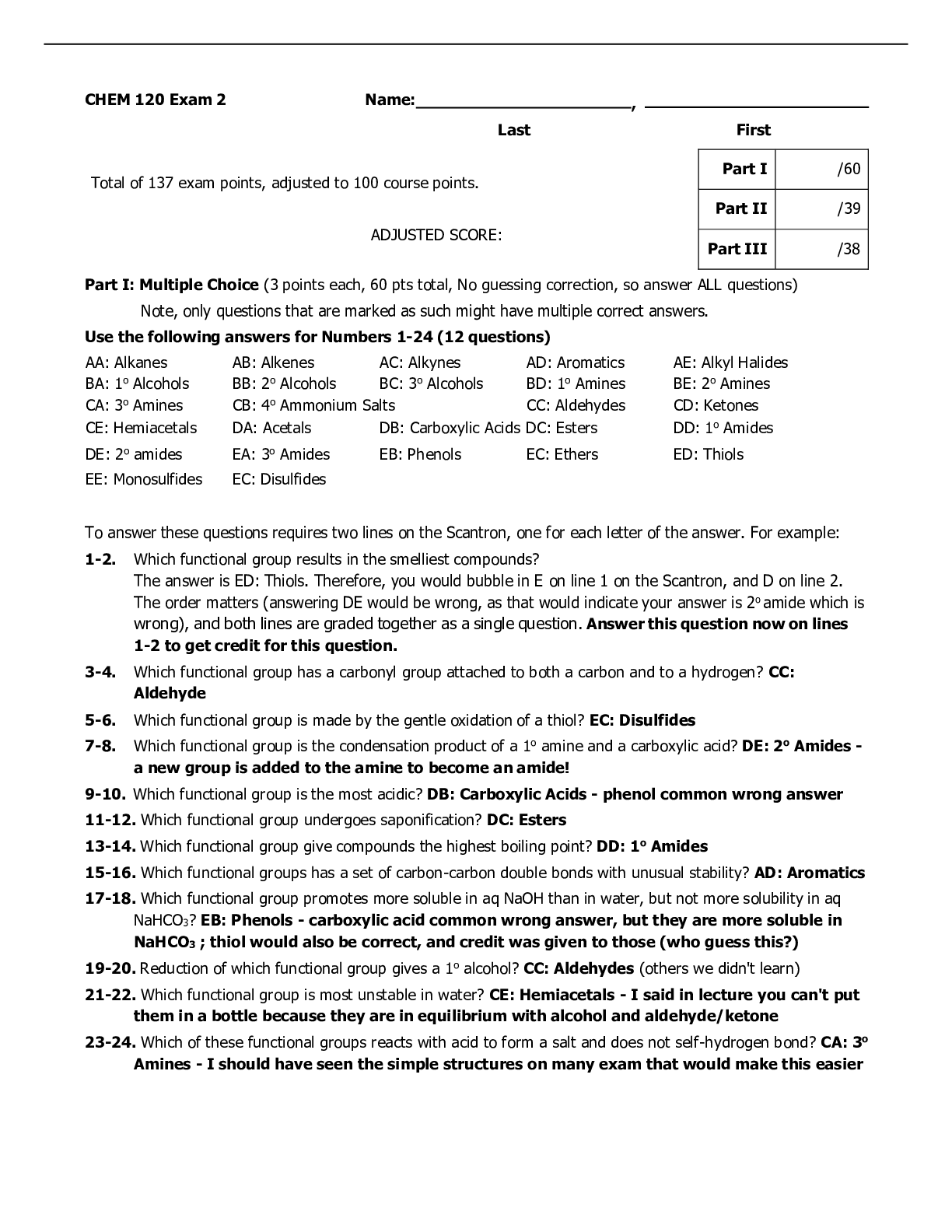
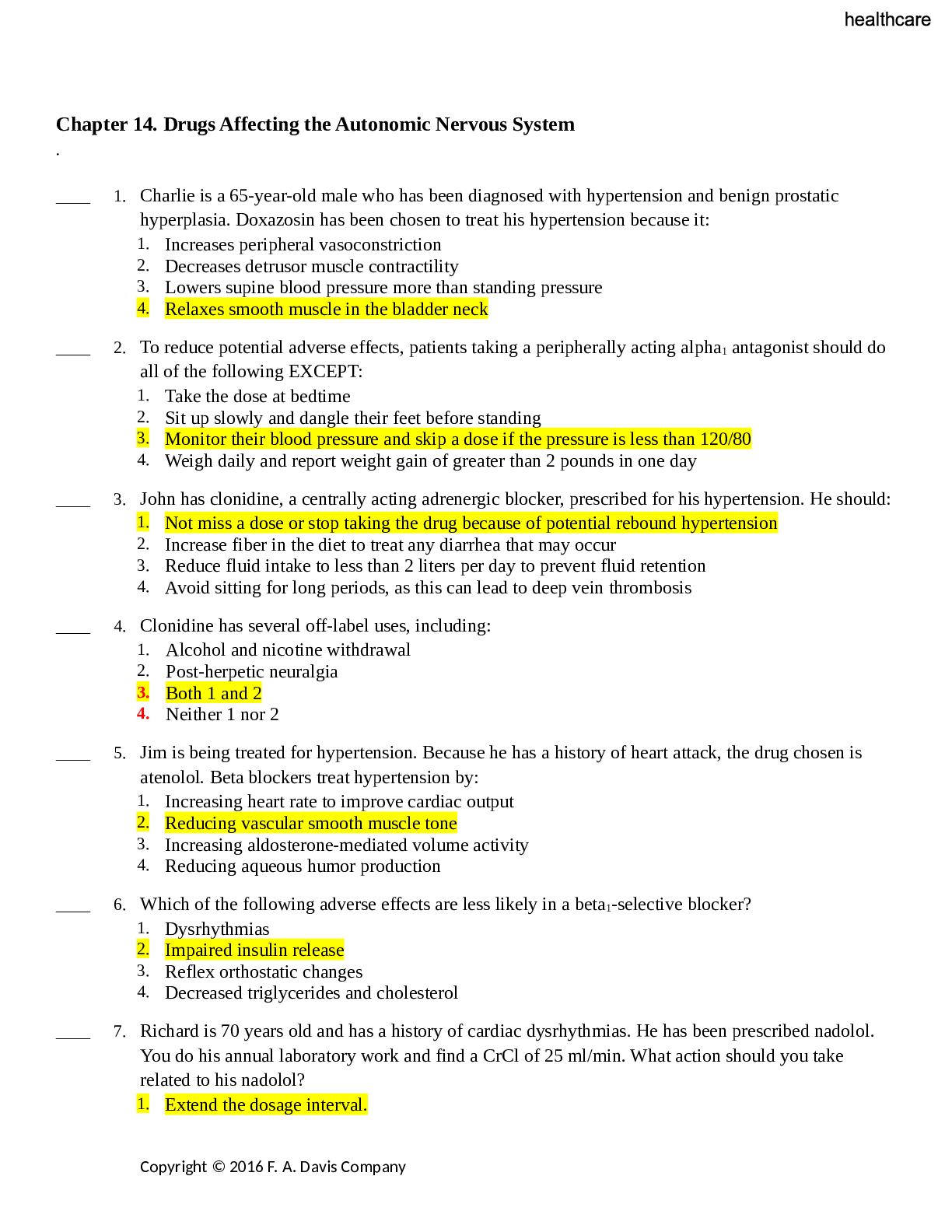
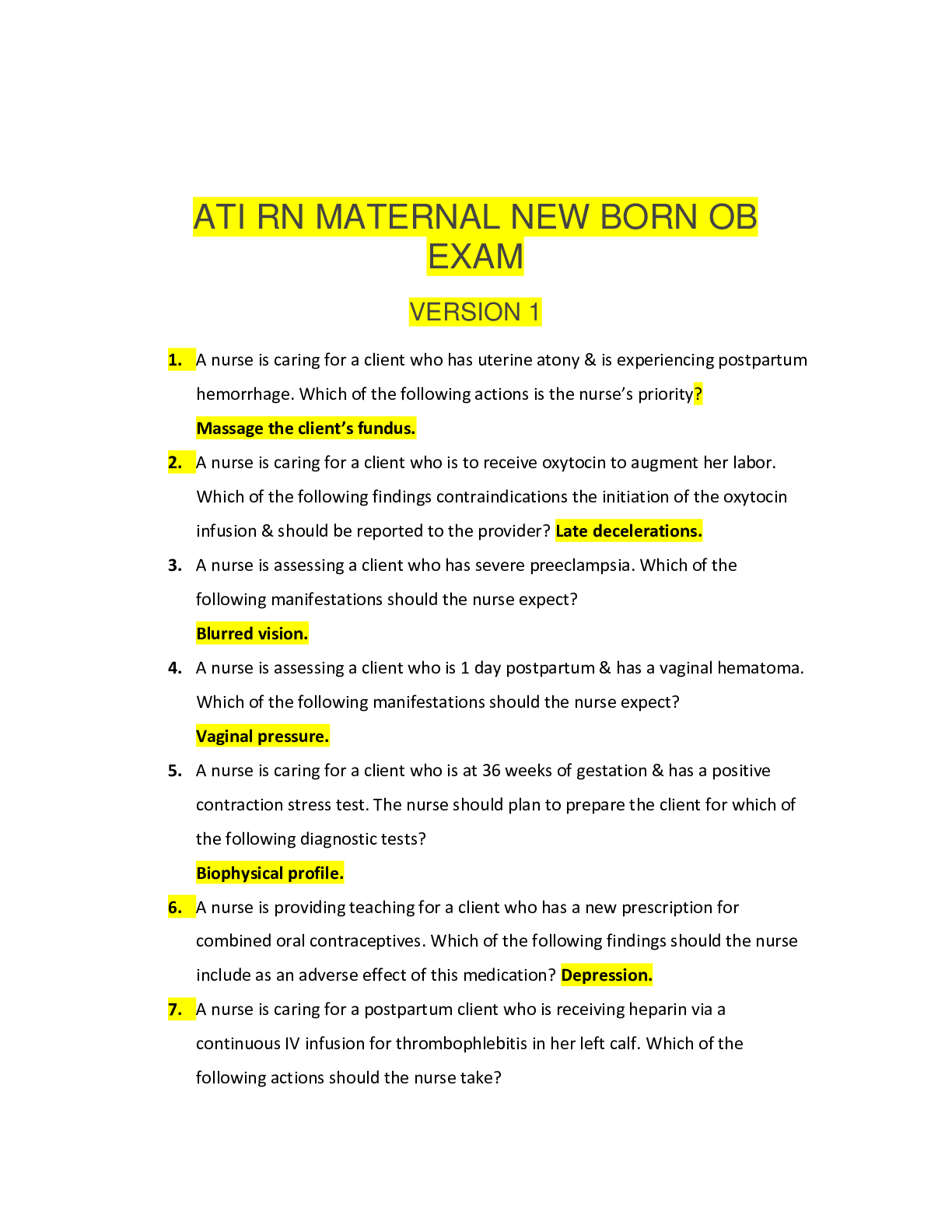
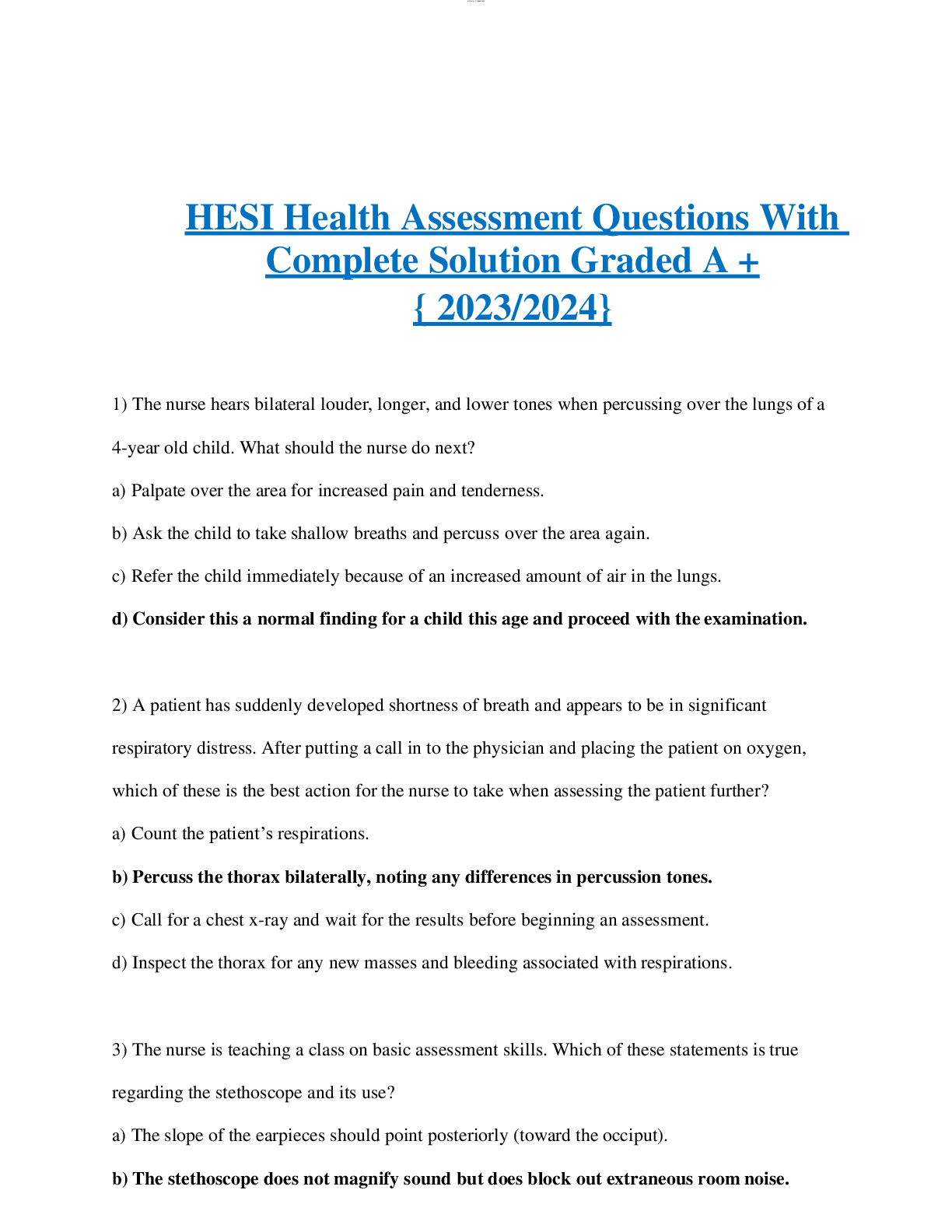
.png)
